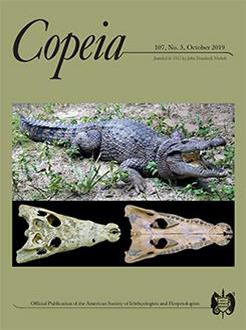Phenotypic variation within a species can be associated with genetic differentiation and varying environmental conditions among populations and their habitats. The relationship between environmental conditions and phenotype expression can influence evolutionary potential, possibly affecting rates of speciation or ecological character displacement. Here, we use a geometric morphometric approach to investigate if shell-shape morphology variation is influenced by the location within the drainage basin (cumulative drainage area) in a freshwater turtle, Graptemys nigrinoda. Drainage area is used due to its hierarchical controls on hydrology, channel morphology, and thus instream hydraulics that comprise the physical habitat hypothesized to drive differences in shell morphology. In addition, we investigate the extent to which salinity may drive similar morphological variation in coastal range extents. We use spatial regression models to assess how geographic variation in carapace length and shell height is influenced by cumulative drainage area and marsh habitat type (i.e., freshwater or brackish marsh). We found that carapace length, shell height, and carapace shape variation covaried with cumulative drainage area in both sexes. Shells become larger and more domed with larger cumulative drainage areas. Additionally, turtles from larger cumulative drainage areas are characterized by distal shifts in costal and marginal scute orientation and medial shifts in costal scutes. The morphological response to hydrogeomorphic controls on physical habitat (e.g., channel morphology and hydrodynamics) as represented through drainage area is predictable and reported in several turtle species. Although others have invoked a predator response hypothesis for larger, more domed shell phenotype (i.e., stronger shell to resist crushing), we propose an alternative hypothesis that there is a potential locomotive advantage of a domed shell phenotype in lentic habitats likely related to buoyancy (i.e., greater volume to mass ratio), which needs further research. Furthermore, increased body size could likely be a selective advantage for inhabiting resource-rich brackish water habitats with increasing dietary diversity. Because these phenotypes (flattened shell and large body size) are associated with locomotion efficiency, our results suggest that gene flow is potentially impeded by distinctly different environmental conditions, providing further evidence for continued or maintained divergence between suggested subspecies within Graptemys nigrinoda.
How to translate text using browser tools
11 October 2019
The Effect of Environmental Conditions on Body Size and Shape of a Freshwater Vertebrate
Joshua R. Ennen,
Mary Lou Hoffacker,
Will Selman,
Christopher Murray,
James Godwin,
Rocko A. Brown,
Mickey Agha
ACCESS THE FULL ARTICLE





